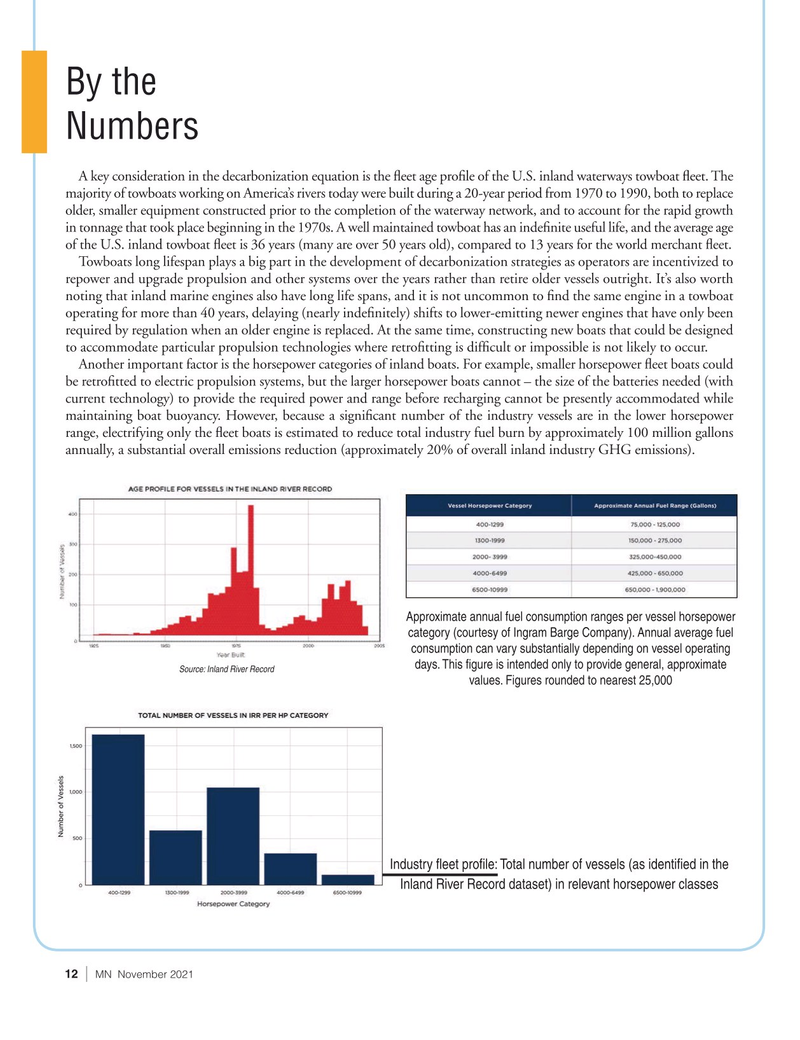
Page 12: of Marine News Magazine (November 2021)
Great Workboats of 2021
Read this page in Pdf, Flash or Html5 edition of November 2021 Marine News Magazine
By the
Numbers
A key consideration in the decarbonization equation is the ? eet age pro? le of the U.S. inland waterways towboat ? eet. The majority of towboats working on America’s rivers today were built during a 20-year period from 1970 to 1990, both to replace older, smaller equipment constructed prior to the completion of the waterway network, and to account for the rapid growth in tonnage that took place beginning in the 1970s. A well maintained towboat has an inde? nite useful life, and the average age of the U.S. inland towboat ? eet is 36 years (many are over 50 years old), compared to 13 years for the world merchant ? eet.
Towboats long lifespan plays a big part in the development of decarbonization strategies as operators are incentivized to repower and upgrade propulsion and other systems over the years rather than retire older vessels outright. It’s also worth noting that inland marine engines also have long life spans, and it is not uncommon to ? nd the same engine in a towboat operating for more than 40 years, delaying (nearly inde? nitely) shifts to lower-emitting newer engines that have only been required by regulation when an older engine is replaced. At the same time, constructing new boats that could be designed to accommodate particular propulsion technologies where retro? tting is dif? cult or impossible is not likely to occur.
Another important factor is the horsepower categories of inland boats. For example, smaller horsepower ? eet boats could be retro? tted to electric propulsion systems, but the larger horsepower boats cannot – the size of the batteries needed (with current technology) to provide the required power and range before recharging cannot be presently accommodated while maintaining boat buoyancy. However, because a signi? cant number of the industry vessels are in the lower horsepower range, electrifying only the ? eet boats is estimated to reduce total industry fuel burn by approximately 100 million gallons annually, a substantial overall emissions reduction (approximately 20% of overall inland industry GHG emissions).
Approximate annual fuel consumption ranges per vessel horsepower category (courtesy of Ingram Barge Company). Annual average fuel consumption can vary substantially depending on vessel operating days. This ? gure is intended only to provide general, approximate
Source: Inland River Record values. Figures rounded to nearest 25,000
Industry ? eet pro? le: Total number of vessels (as identi? ed in the
Inland River Record dataset) in relevant horsepower classes 12 | MN November 2021

 11
11

 13
13
